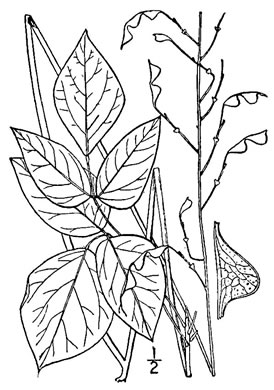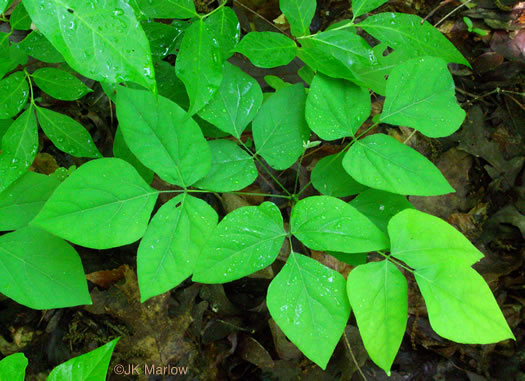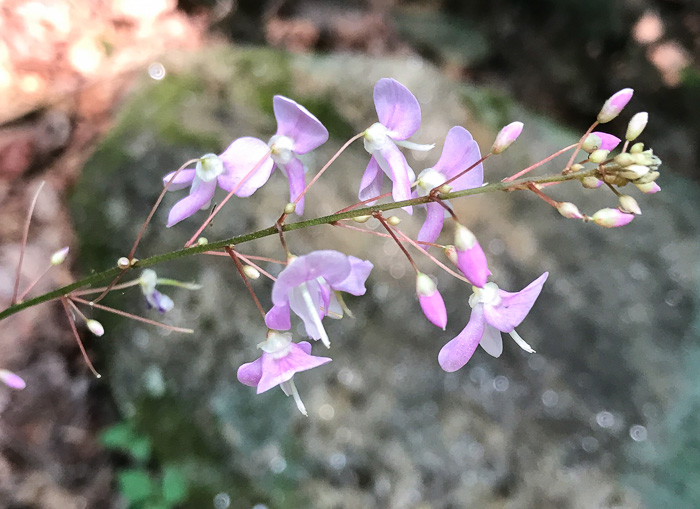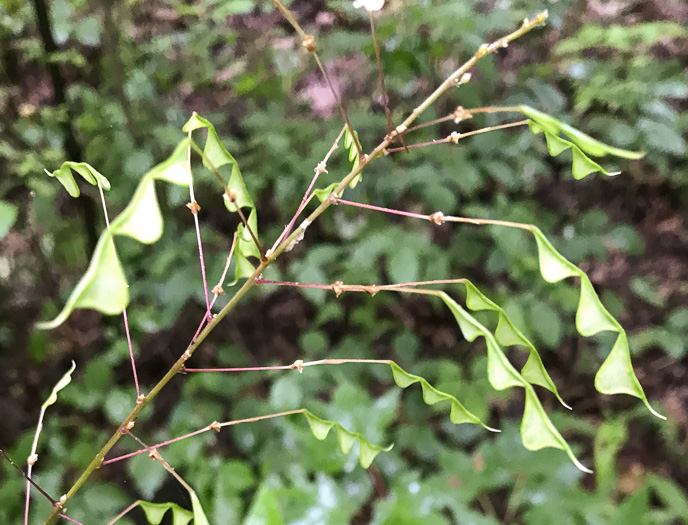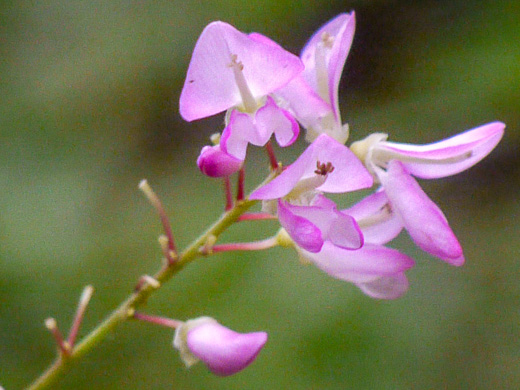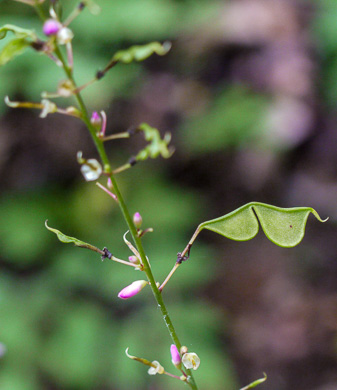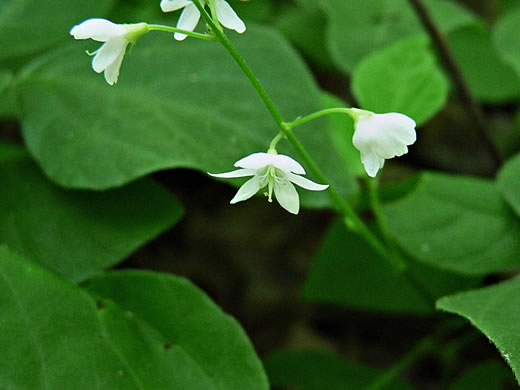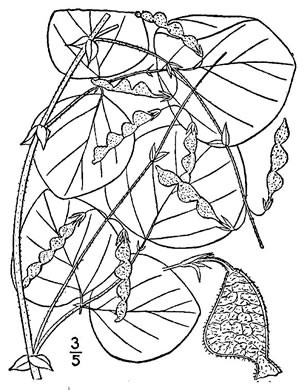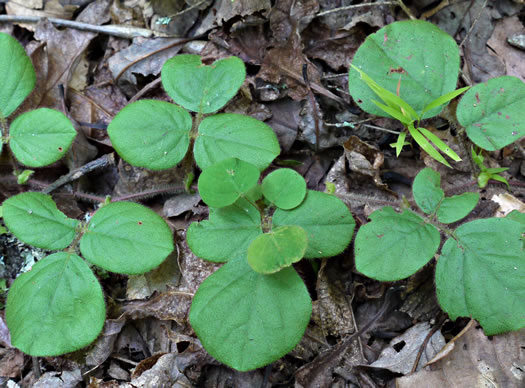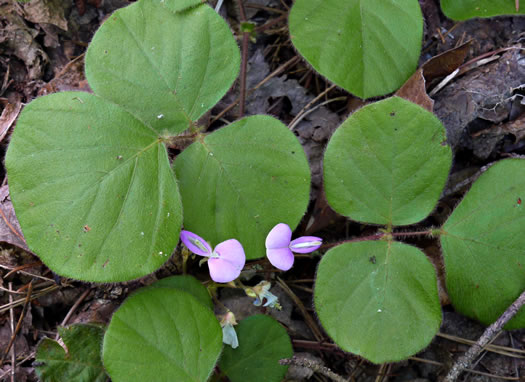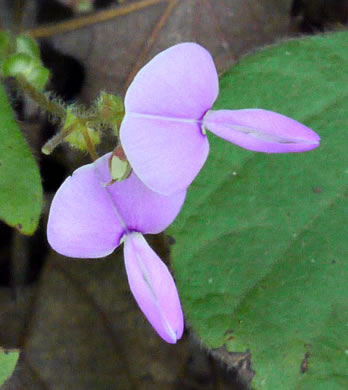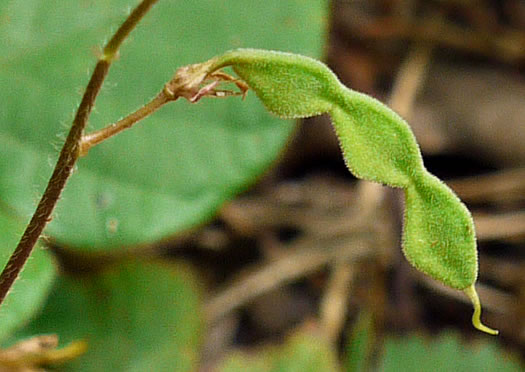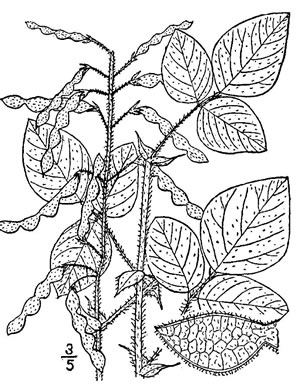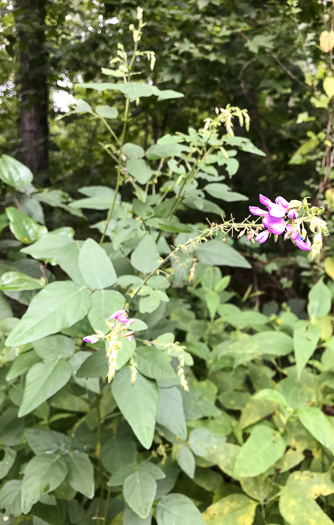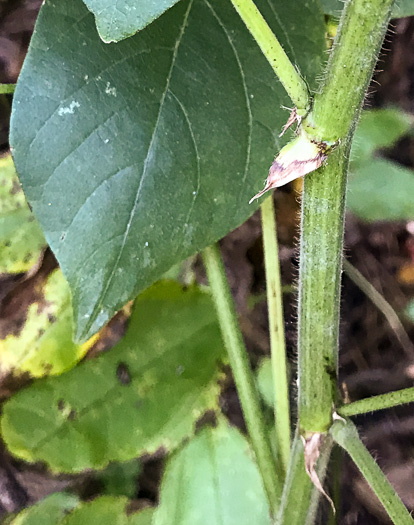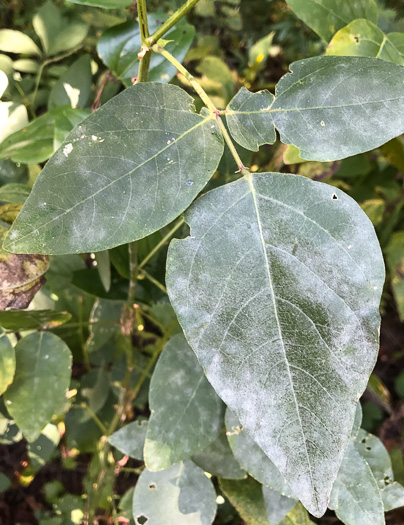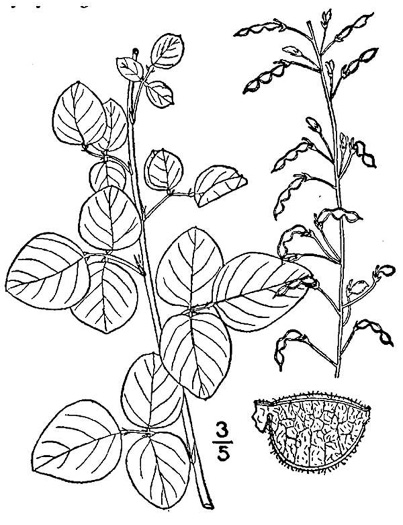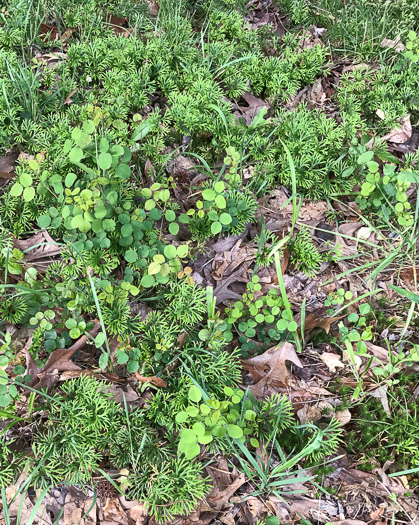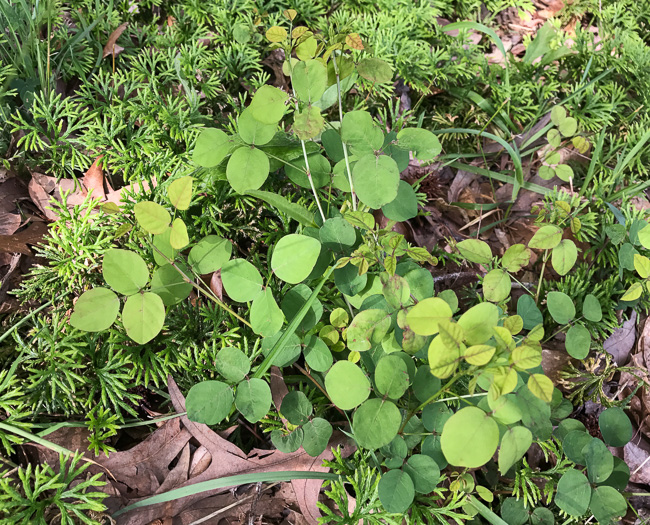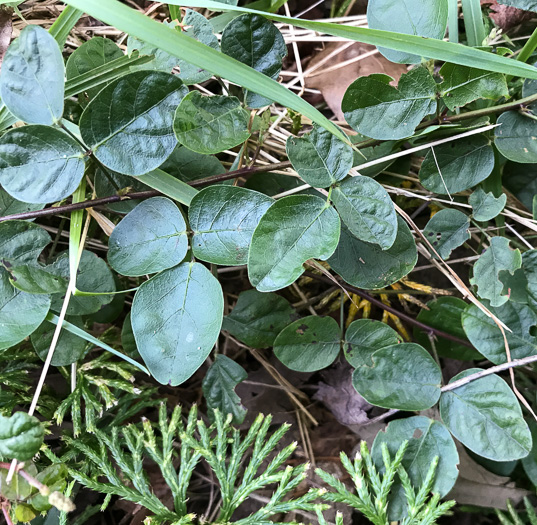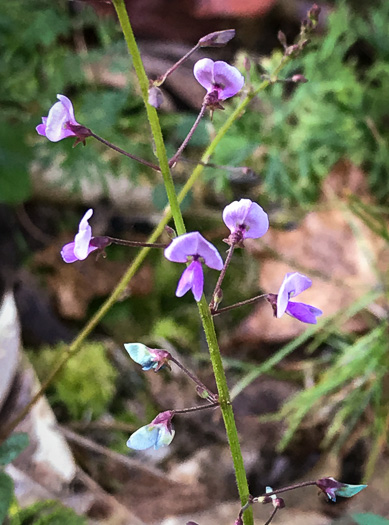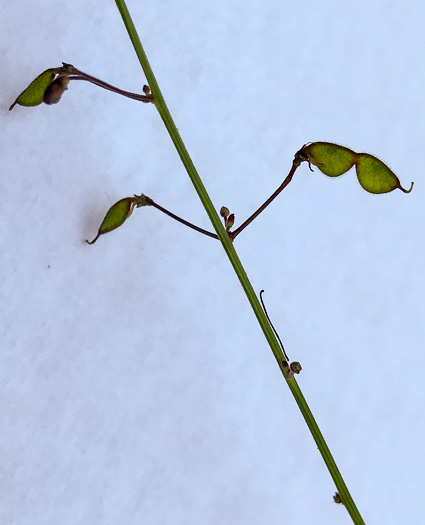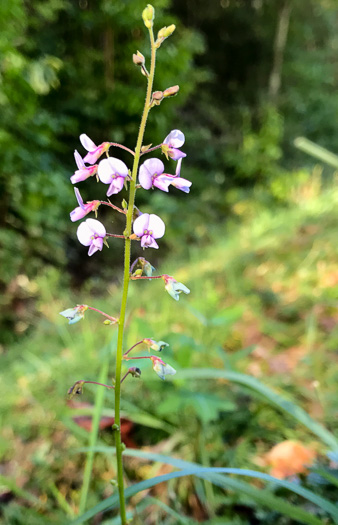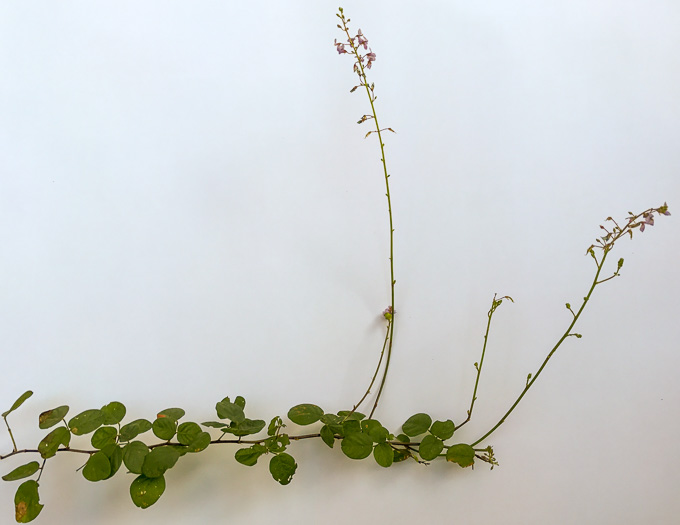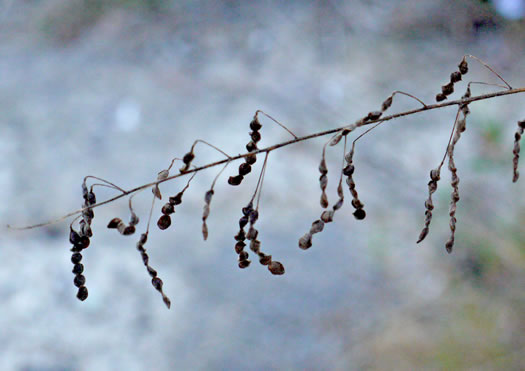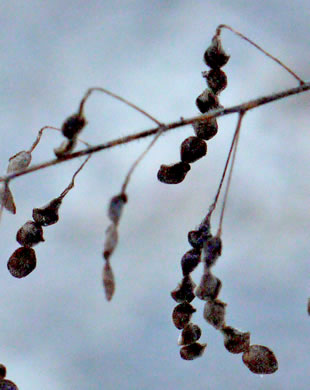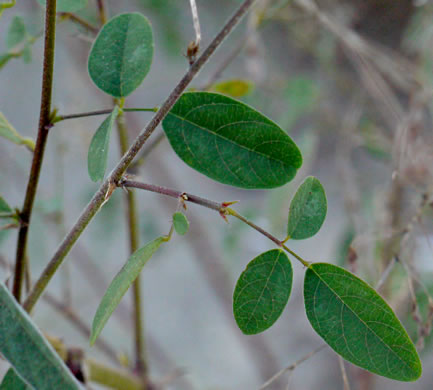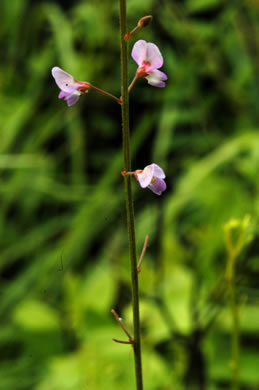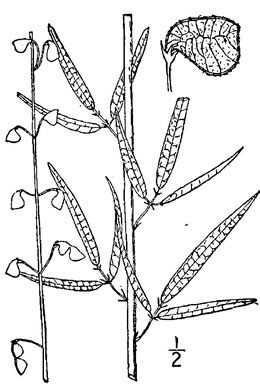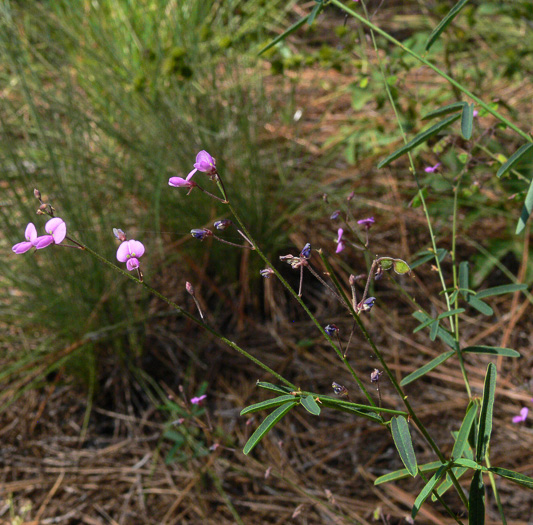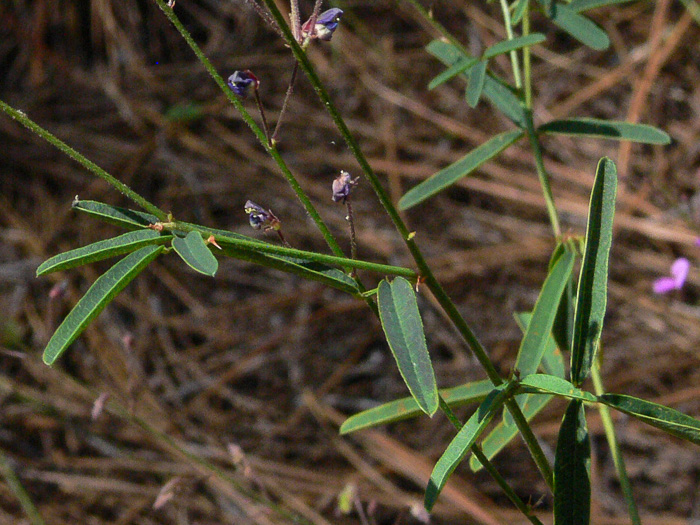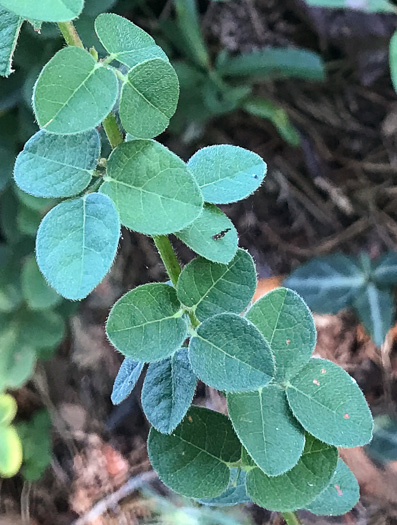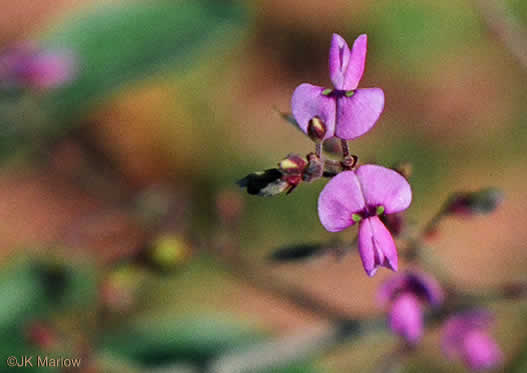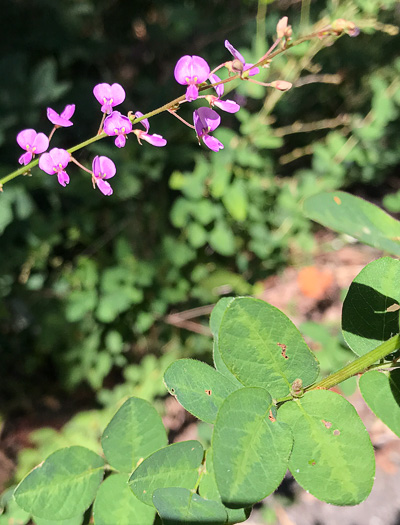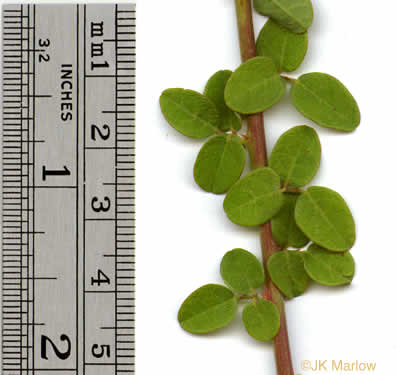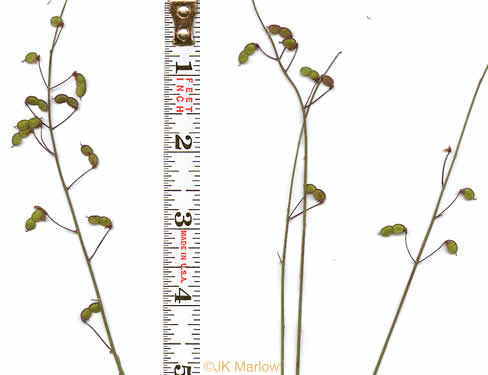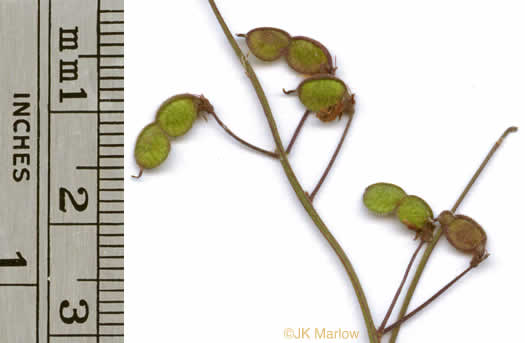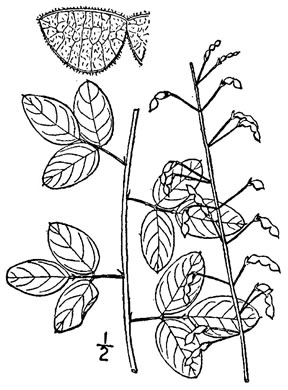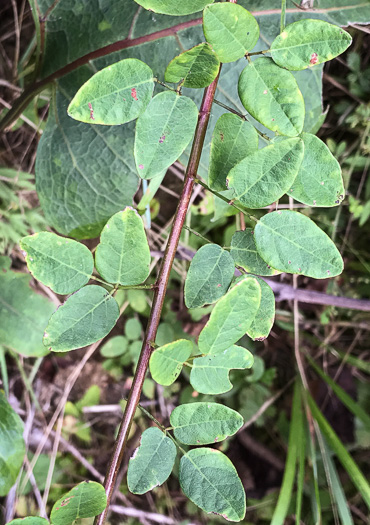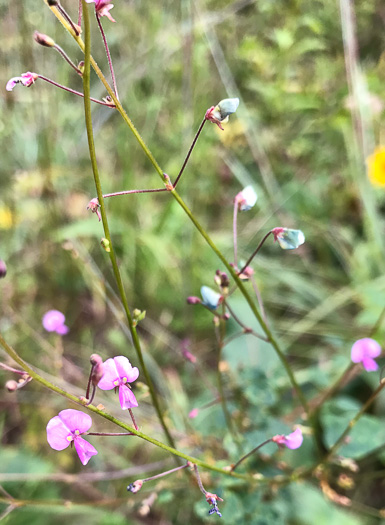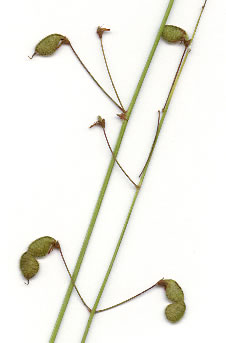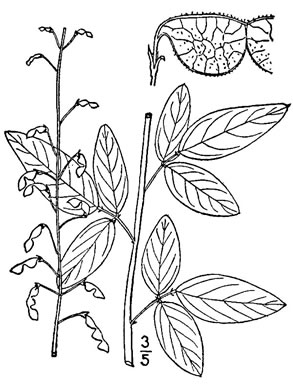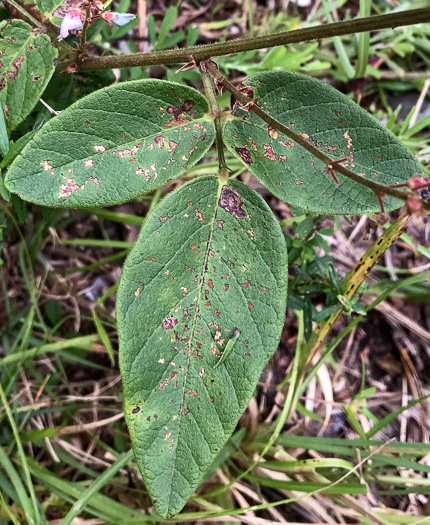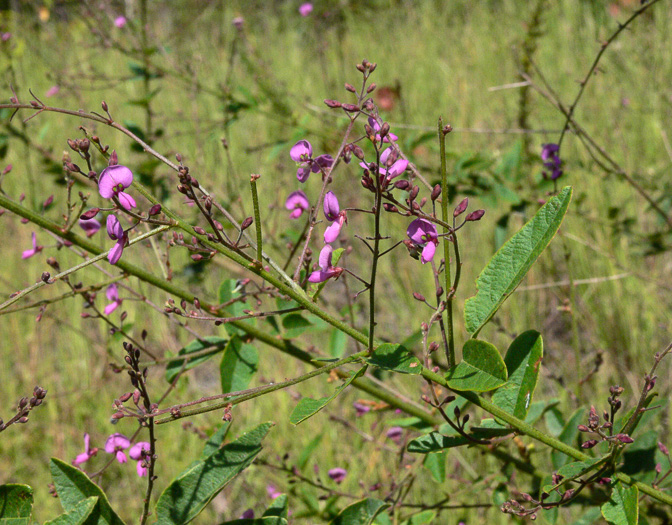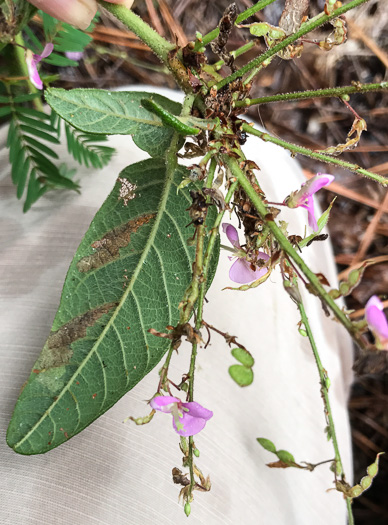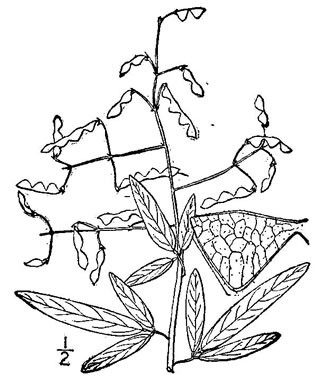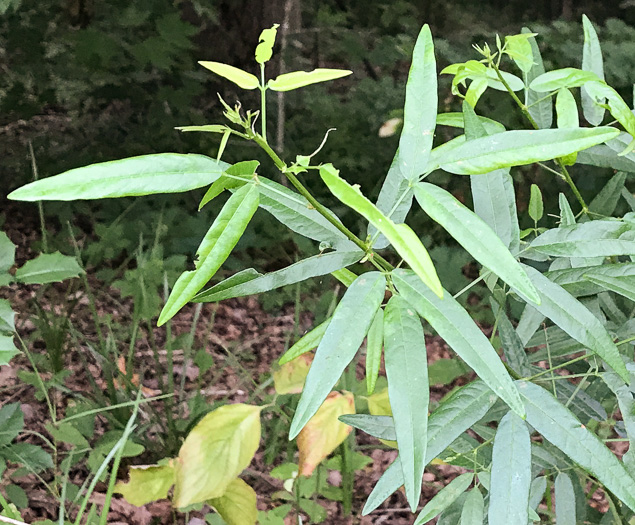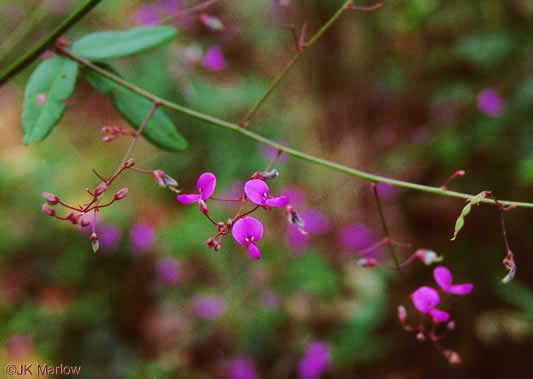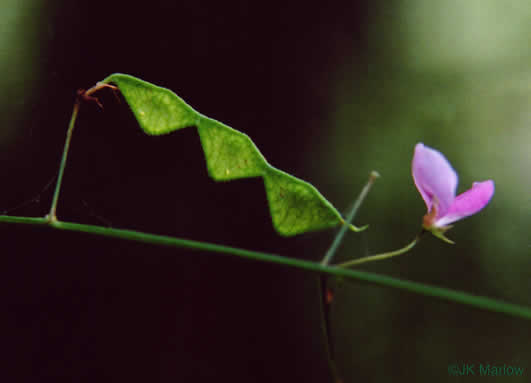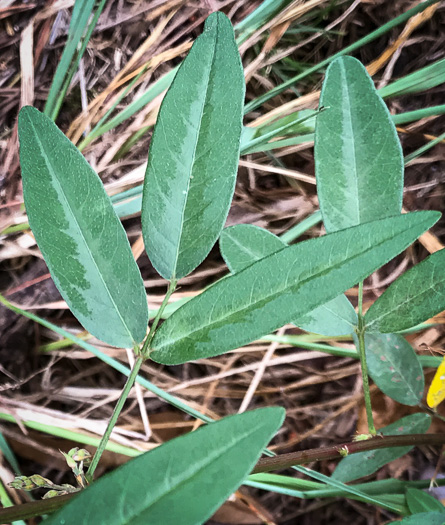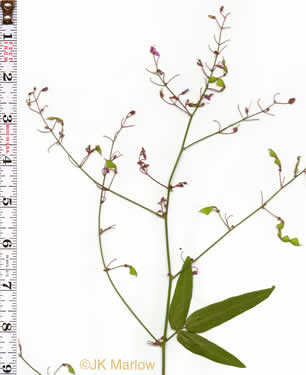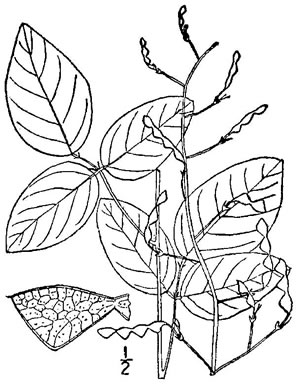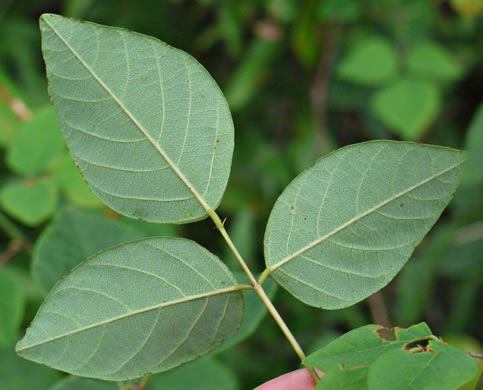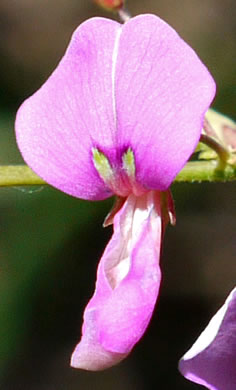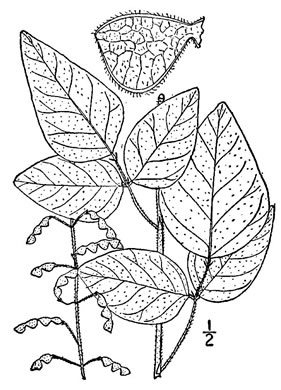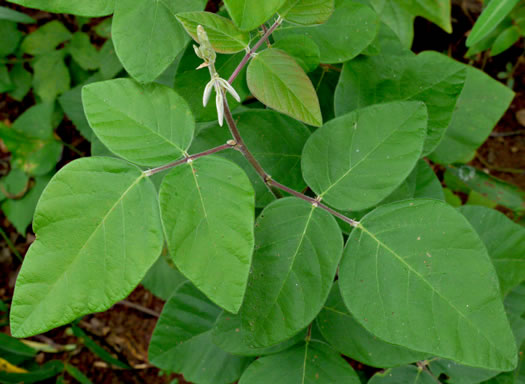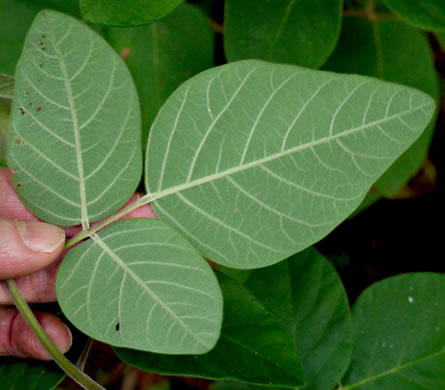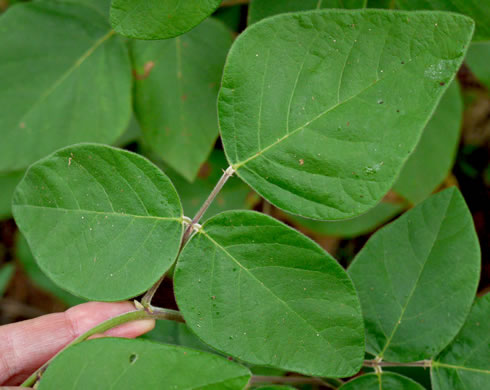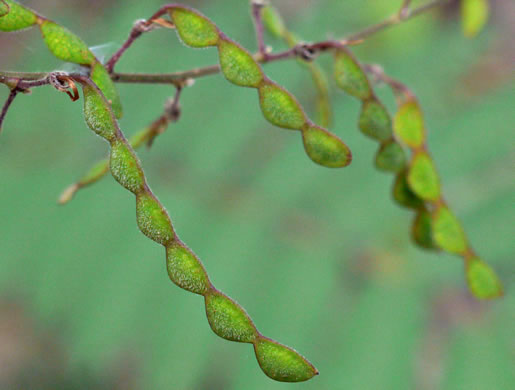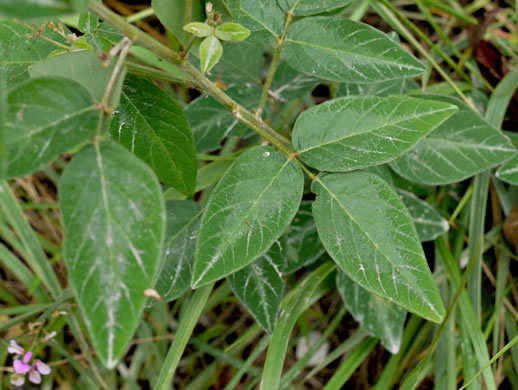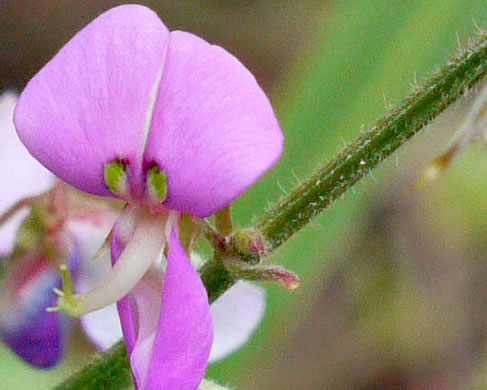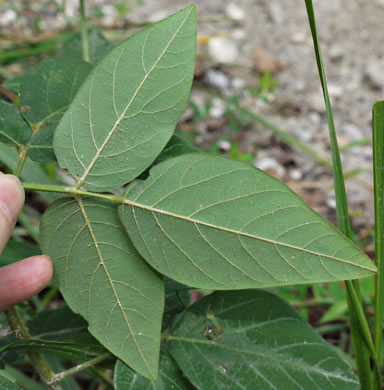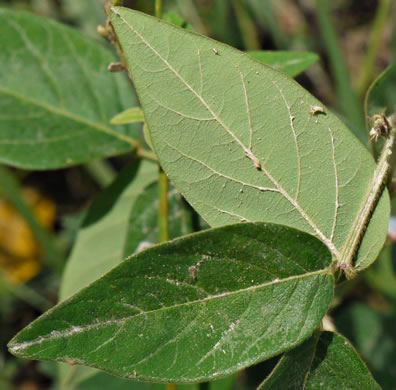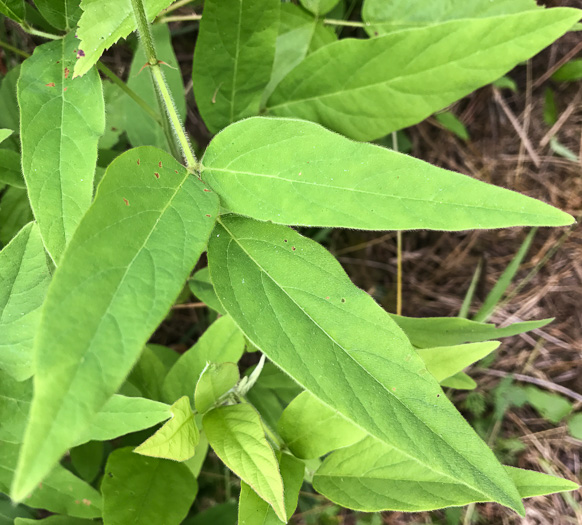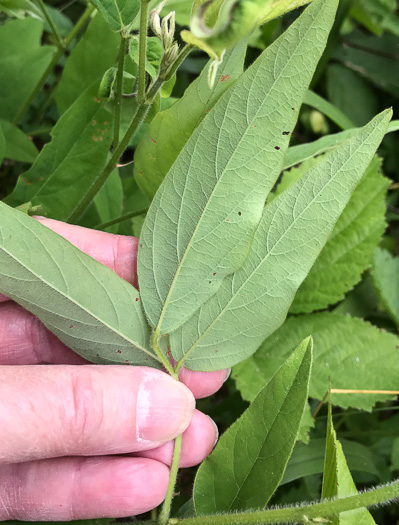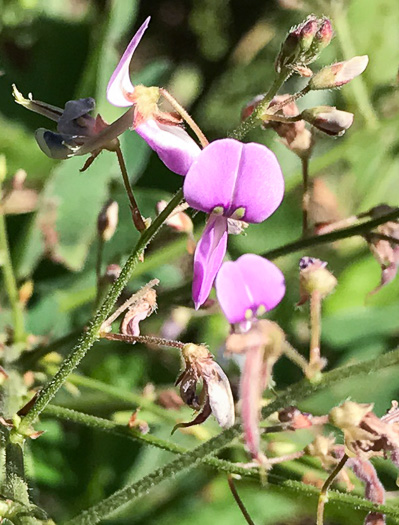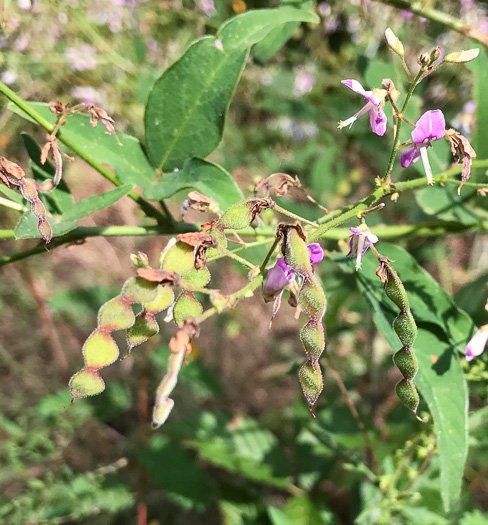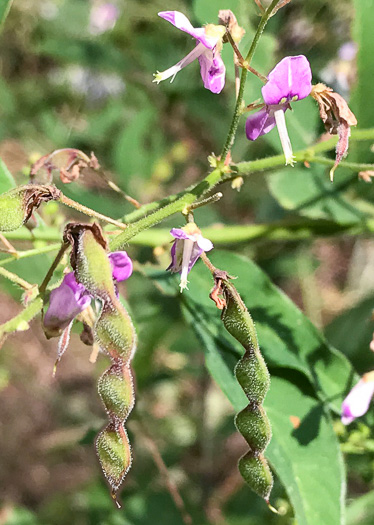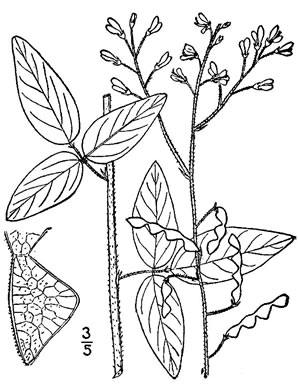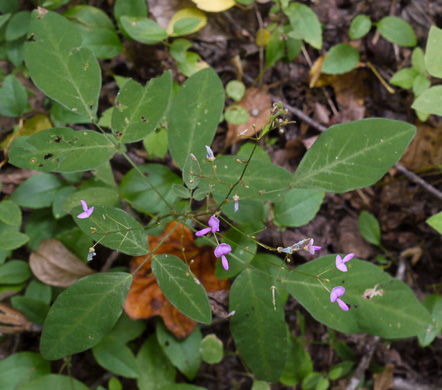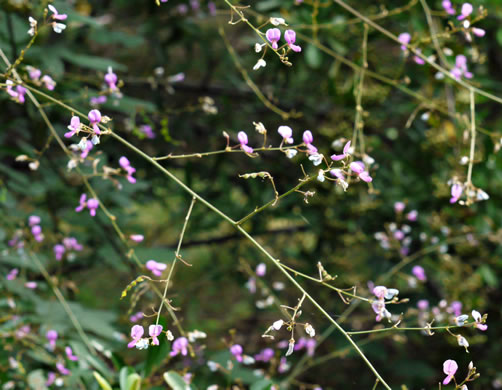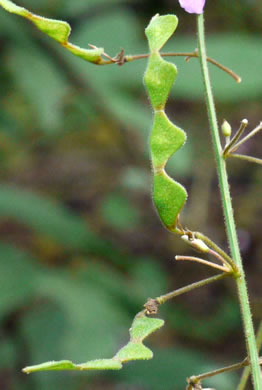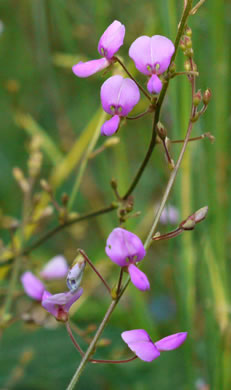Your search found 90 image(s) of Beggar's Lice (Tick-trefoil) species.
To see larger pictures, click or hover over the thumbnails.
To go to the plant's detail page, click its name.
 Habitat: Moist to dry forests
Habitat: Moist to dry forests
Leaflets ovate to obovate, to 4" long, crowded at top of the sterile branch, per Wildflowers of Tennessee (Carman, 2005).
Rose-purple, pea-like flowers in a loose raceme on a leafless scape, per Wildflowers of Tennessee, the Ohio Valley, and the Southern Appalachians (Horn, Cathcart, Hemmerly, & Duhl, 2005).
Legume (loment) straight across one edge and scalloped along the other, per Atlantic Coastal Plain Wildflowers (Nelson, 2006).
Stem forked at base: sterile branch to 12" tall and leafless scape to 40", per Wildflowers of Tennessee (Carman, 2005).
 Habitat: Moist forests, especially nutrient-rich
Habitat: Moist forests, especially nutrient-rich
Pedicels 3.5-5.5mm. Corolla 5-7mm, per Native and Naturalized Leguminosae (Fabaceae) of the United States (Isely, 1998).
inflorescence 3-8dm long, elongate, conspicuous, much exceeding the leaves, per Weakley's Flora (2012).
Fruits 7.5-9mm, generally concave above, assymmetrically rounded below, per Native and Naturalized Leguminosae (Fabaceae) of the United States (Isely, 1998).
Leaves subverticillate, clustered; leaflets conspicuously & strongly acuminate, per Weakley's Flora.
 Habitat: Moist forests
Habitat: Moist forests
Calyx densely uncinulate-puberulent; petals white, 5-7mm long, per Vascular Flora of the Carolinas (Radford, Ahles, & Bell, 1968).
 Habitat: Dry forests and woodlands
Habitat: Dry forests and woodlands
A prostrate plant with stems to 5' long, per Wildflowers of Tennessee (Carman, 2005).
Unique in that its leaflets are nearly round, per Wildflowers of the Southern Mountains (Smith, 1998).
Erect, sparsely flowered racemes arise from the trailing stem, per Wildflowers of the Southern Mountains (Smith, 1998).
Leaflets 1-4cm long & wide. Stipules persistent, ovate, & clasping the stem, per Forest Plants of the Southeast and Their Wildlife Uses (Miller & Miller, 2005).
Loment of (3-)4-6 segments, both margins about equally indented, per Vascular Flora of the Carolinas (Radford, Ahles, & Bell, 1968).
 Habitat: Fields, woodland borders, disturbed areas
Habitat: Fields, woodland borders, disturbed areas
Stems 6-15dm tall, densely spreading-pilose and uncinulate-puberulent, per Vascular Flora of the Carolinas (Radford, Ahles, & Bell, 1968).
Stipules ovate to ovate-lanceolate, with a wide partially clasping base, per Vascular Flora of the Carolinas (Radford, Ahles, & Bell, 1968).
Petiole much longer than stalk of terminal leaflet, per Wildflowers of the Eastern United States (Duncan & Duncan, 1999).
Corolla 9-13 mm long [in other words, relatively large for a Desmodium!], per Leguminosae (Fabaceae), vol 3, part 2, Vascular flora of the southeastern United States (Isely, 1990).
 Habitat: Longleaf pine sandhills and other dry forests and woodlands
Habitat: Longleaf pine sandhills and other dry forests and woodlands
Unusual in the genus in that it "crawls" though not technically a vine, per Vascular Plants of North Carolina.
Stems to 2' long, prostrate/trailing, with leaves quite small for the genus, per Vascular Plants of North Carolina.
Distinguished by prostrate habit & small leaves with mostly suborbicular leaflets, per Leguminosae (Fabaceae), vol 3, part 2, Vascular flora of the southeastern United States (Isely, 1990).
Pedicels 6-16mm long; petals 4-6mm long, per Vascular Flora of the Carolinas (Radford, Ahles, & Bell, 1968).
Loment segments convex above, symmetrically rounded below, per Leguminosae (Fabaceae), vol 3, part 2, Vascular flora of the southeastern United States (Isely, 1990).
Stems trailing vinelike along the ground, per Weakley's Flora (2020).
 Habitat: Fields, woodland borders, disturbed areas
Habitat: Fields, woodland borders, disturbed areas
Loment of 2-7 segments, per Vascular Flora of the Carolinas. Each 3-3.5mm long, per Weakley's Flora.
Loment segments nearly symmetrical (diamond, rounded-diamond, or ~ elliptical), per Weakley's Flora.
Stipules and stipels persistent. Leaflets often more than 2x long as wide, per Vascular Flora of the Carolinas (Radford, Ahles, & Bell, 1968).
 Habitat: Pine savannas, wet pine flatwoods
Habitat: Pine savannas, wet pine flatwoods
Inflorescence usually paniculate, pedicels 4-10mm long, petals 4-5mm long, per Vascular Flora of the Carolinas (Radford, Ahles, & Bell, 1968).
 Habitat: Longleaf pine sandhills, other dry woodlands
Habitat: Longleaf pine sandhills, other dry woodlands
Inflorescence usually paniculate. Pedicels (4)6-11mm long; petals 3-5mm long, per Vascular Flora of the Carolinas (Radford, Ahles, & Bell, 1968).
Terminal leaflets linear to narrowly oblong, often 6-10x long as wide, per Vascular Flora of the Carolinas (Radford, Ahles, & Bell, 1968).
 Habitat: Fields, woodland borders, disturbed areas
Habitat: Fields, woodland borders, disturbed areas
Leaflets sparsely to abundantly pilose on both surfaces and especially so above, rarely glabrate, per Vascular Flora of the Carolinas (Radford, Ahles, & Bell, 1968).
Petals pink to purplish, 3-5mm long, per Vascular Flora of the Carolinas (Radford, Ahles, & Bell, 1968).
Small blunt leaflets with petioles under 3/8", more or less soft-hairy, per Wildflowers of the Southern Mountains (Smith, 1998).
Loment of 1-2(-3) subovate segments, each 3.5-6mm long and 2.8-4mm broad, per Vascular Flora of the Carolinas (Radford, Ahles, & Bell, 1968).
 Habitat: Fields, woodland borders, disturbed areas
Habitat: Fields, woodland borders, disturbed areas
A smooth plant with long petioles, per Wildflowers of the Southern Mountains (Smith, 1998).
Corolla about 5mm long, per Leguminosae (Fabaceae), vol 3, part 2, Vascular flora of the southeastern United States (Isely, 1990).
Loment - upper slightly convex to almost straight, broadly rounded below, per Vascular Flora of the Carolinas (Radford, Ahles, & Bell, 1968).
 Habitat: Longleaf pine sandhills and dry pine flatwoods, other dry pine woodlands, fields, woodland borders, disturbed areas
Habitat: Longleaf pine sandhills and dry pine flatwoods, other dry pine woodlands, fields, woodland borders, disturbed areas
Loments similar to D. ciliare & D. marilandicum, with 2-3 rounded segments, per Leguminosae (Fabaceae), vol 3, part 2, Vascular flora of the southeastern United States (Isely, 1990).
Petioles of median leaves usually shorter than width of lateral leaflets, per Vascular Flora of the Carolinas (Radford, Ahles, & Bell, 1968).
The terminal leaflet is usually elongate, per Native and Naturalized Leguminosae (Fabaceae) of the United States (Isely, 1998).
Inflorescence usually paniculate. Pedicels 4-17mm long, per Vascular Flora of the Carolinas (Radford, Ahles, & Bell, 1968).
Stems and petioles densely uncinate-pubescent, per Vascular Flora of the Carolinas (Radford, Ahles, & Bell, 1968).
Leaflets sparsely to densely short-pubescent and reticulate below, per Vascular Flora of the Carolinas (Radford, Ahles, & Bell, 1968).
 Habitat: Fields, woodland borders, disturbed areas
Habitat: Fields, woodland borders, disturbed areas
The southern mtns' only Desmodium with narrow leaflets, per Wildflowers of the Southern Mountains (Smith, 1998).
Leaflets usually 3-8x longer than wide, per Vascular Flora of the Carolinas (Radford, Ahles, & Bell, 1968).
Many rose to purple flowers in panicles at the top of 2-4' tall plant, per Wildflowers of Tennessee, the Ohio Valley, and the Southern Appalachians (Horn, Cathcart, Hemmerly, & Duhl, 2005).
Loment segments angled on lower margin (thus triangular to sub-rhombic), per Weakley's Flora.
Leaflets (2.5)3-8(10)x long as wide; leaflet pubescence usually sparse, per Weakley's Flora (2015).
The inflorescence is a large, widely branched panicle, per Wildflowers of the Southern Mountains (Smith, 1998).
 Habitat: Dry oak and pine forests, fields, woodland borders, disturbed areas
Habitat: Dry oak and pine forests, fields, woodland borders, disturbed areas
Stems and leaves glabrous, per Weakley's Flora (2012).
Leaflets distinctly pale on the lower surface, per Weakley's Flora (2012).
Petals 8-10mm long, per Vascular Flora of the Carolinas (Radford, Ahles, & Bell, 1968).
Loment's upper sutures straight or slightly convex, lower abruptly angled, per Vascular Flora of the Carolinas (Radford, Ahles, & Bell, 1968).
 Habitat: Woodland borders, oak and pine woodlands, disturbed areas
Habitat: Woodland borders, oak and pine woodlands, disturbed areas
Stems sparsely to densely-puberulent as well as uncinate-pubescent, per Vascular Flora of the Carolinas (Radford, Ahles, & Bell, 1968).
Leaves densely villous on the lower surface, per Weakley's Flora (2012).
Terminal leaflet rhombic or deltoid, 3.5-11cm long; stipels persistent, per Vascular Flora of the Carolinas (Radford, Ahles, & Bell, 1968).
Petals 5-9mm long, per Vascular Flora of the Carolinas (Radford, Ahles, & Bell, 1968).
Loment straight, with (3)4-5(6) segments, per Weakley's Flora (2012).
 Habitat: Fields, woodland borders, disturbed areas
Habitat: Fields, woodland borders, disturbed areas
Leaves glabrate to moderately appressed-pilose above, per Vascular Flora of the Carolinas (Radford, Ahles, & Bell, 1968).
Loment more or less arching with 2-4 segments, rounded both above and below, per Vascular Flora of the Carolinas (Radford, Ahles, & Bell, 1968).
Bracts (subtending clusters of 2-3 flowers) usually villous, per Weakley's Flora (2012).
Leaflets cinereous, or villous, on the lower surface, per Weakley's Flora (2012).
This and D. viridiflorum are the velvety-pubescent eastern species, per Native and Naturalized Leguminosae (Fabaceae) of the United States (Isely, 1998).
 Habitat: Fields, woodland borders, disturbed areas
Habitat: Fields, woodland borders, disturbed areas
Terminal leaflets lanceolate to broadly ovate (most on the narrow end of this range), per Weakley's Flora (2022).
Leaflets broadest nearer the base than the middle, per Weakley's Flora (2022).
Corollas mostly 6-9mm long, per Vascular Flora of the Carolinas (Radford, Ahles, & Bell, 1968).
Each side of ventral margin of most articles straight to slightly convex, per Weakley's Flora (2022).
 Habitat: Fields, woodland borders, hammocks, disturbed areas
Habitat: Fields, woodland borders, hammocks, disturbed areas
Terminal leaflets narrowly ovate to broadly elliptic-ovate (most on the wider end of this range), per Weakley's Flora (2022).
Leaves mostly all the same size and not or little extending onto the flowering branches, per Weakley's Flora (2022).
Each side (from the isthmus to the broadest point) of ventral margin of most articles concave, per Weakley's Flora (2022).
Corollas mostly 6-9mm long, per Vascular Flora of the Carolinas (Radford, Ahles, & Bell, 1968).

